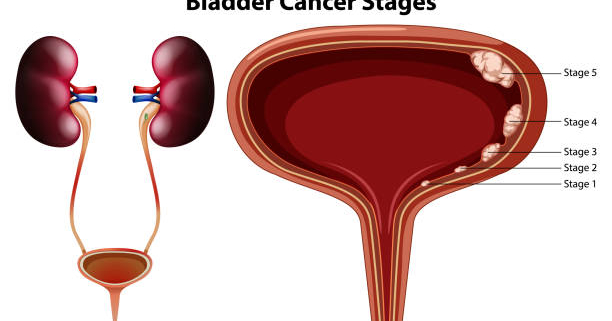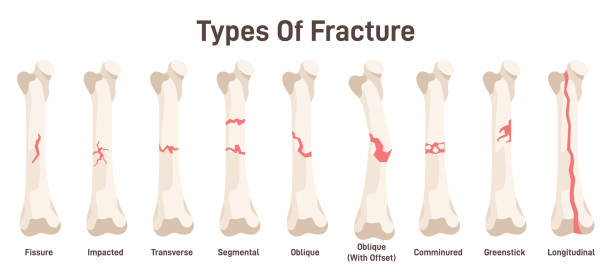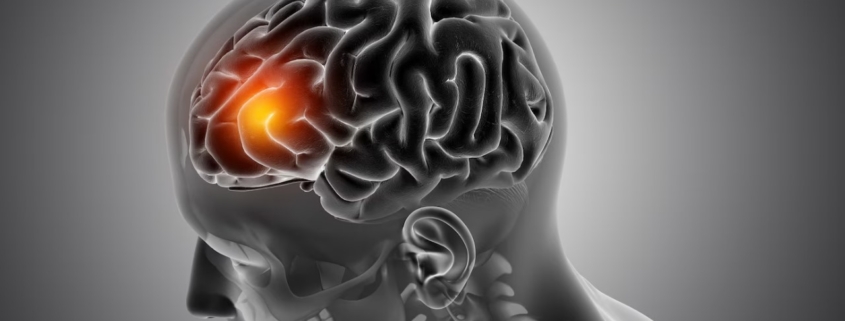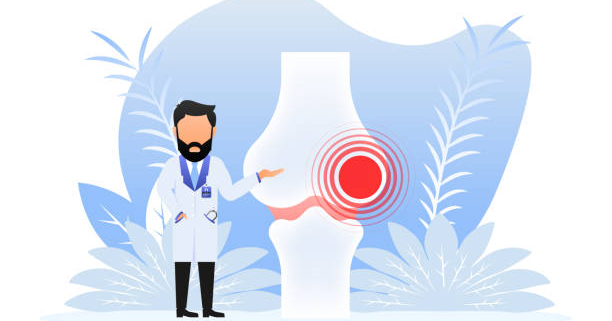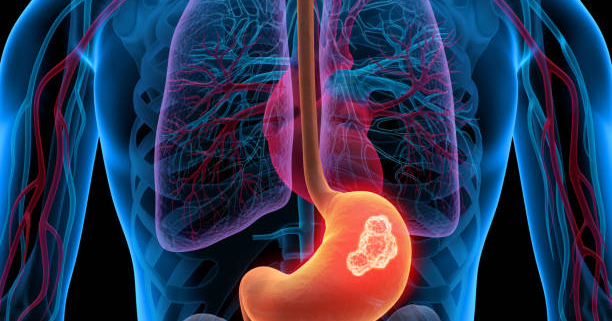Arthritis causes swelling and pain in one or more joints, often worsening with age. The most common types are osteoarthritis, where cartilage wears down over time, and rheumatoid arthritis, an autoimmune condition attacking joint linings. Gout results from uric acid crystal buildup, while other forms can be linked to infections or diseases like psoriasis or lupus. Treatments aim to relieve symptoms and improve quality of life, varying by arthritis type.
Types:
- Ankylosing Spondylitis: Inflammatory arthritis primarily affects the spine, leading to stiffness and potential fusion of vertebrae.
- Gout: Caused by uric acid crystals in a joint, leading to intense pain and swelling, often starting in the big toe.
- Juvenile Idiopathic Arthritis: Chronic arthritis in children under 16, causes joint pain and swelling that can affect growth.
- Osteoarthritis: Degenerative joint disease where cartilage wears down, causing pain and stiffness.
- Psoriatic Arthritis: Linked to psoriasis, it can lead to joint pain and inflammation in addition to skin symptoms.
- Reactive Arthritis: Develops in response to an infection elsewhere in the body, causing joint pain and swelling.
- Rheumatoid Arthritis: Autoimmune condition where the immune system attacks joint linings, leading to inflammation and joint damage.
- Septic Arthritis: Infection in a joint causing severe pain, swelling, and redness, requiring prompt medical treatment.
- Thumb Arthritis: Affects the base joint of the thumb, causing pain and reduced grip strength.
Symptoms
Arthritis often shows up through issues in the joints. Depending on the specific type, you might notice signs and symptoms such as:
- Pain
- Stiffness
- Swelling
- Redness
- Decreased range of motion
Causes
Osteoarthritis and rheumatoid arthritis are the two main types of arthritis, each affecting the joints in different ways.
Osteoarthritis
Osteoarthritis, the most prevalent form of arthritis, results from the slow deterioration of cartilage, which cushions the ends of your bones. As cartilage deteriorates, bones rub together, causing pain and restricted movement. This condition worsens over time and can be accelerated by injuries or infections, leading to inflammation and changes in joint structure.
Rheumatoid arthritis
In rheumatoid arthritis, the immune system mistakenly targets the synovial membrane, the tough lining that surrounds and protects the joint. This leads to inflammation and swelling of the lining. Over time, this inflammation can damage both the cartilage and the bone inside the joint.
Risk Factors
Factors that can increase your risk of arthritis include:
- Family History: Family History: If arthritis is common in your family, you may be at a higher risk, particularly if your parents or siblings have experienced it.
- Age: The likelihood of developing various forms of arthritis, such as osteoarthritis, rheumatoid arthritis, and gout, generally goes up as you get older.
- Gender: Women are more likely to get rheumatoid arthritis, while gout predominantly affects men.
- Previous Joint Injury: If you’ve had an injury to a joint, like from sports, it could raise your chances of developing arthritis in that joint later on.
- Obesity: Excess weight puts extra strain on your joints, particularly the knees, hips, and spine, increasing the risk of arthritis.
Complications
Severe arthritis, especially in your hands or arms, can make everyday activities challenging. If it affects weight-bearing joints, like your knees or hips, it might be hard to walk comfortably or sit up properly. Over time, some joints may even shift out of their normal alignment or change shape.
Diagnosis
Doctors will check your joints for indications of swelling, redness, and warmth.
Laboratory tests
Testing several body fluids can help identify the type of arthritis you might have. Common fluids analyzed are blood, urine, and joint fluid. To get a sample of joint fluid, doctors first clean and numb the area, then use a needle to extract fluid from the joint space.
Imaging
These tests can reveal issues within the joint which will be behind your symptoms.
- X-rays: Use low radiation to reveal bone damage, cartilage loss, and bone spurs, and monitor disease progression.
- CT Scans: Combine multiple X-ray images from different angles to provide detailed views of both bones and surrounding soft tissues.
- MRI: Employ radio waves and magnets to create detailed images of soft tissues like cartilage, tendons, and ligaments.
- Ultrasound: Utilizes high-frequency sound waves to visualize soft tissues, cartilage, and fluid around joints, and assists in guiding injections or fluid removal.
Treatment
Arthritis treatment aims to ease symptoms and enhance joint function. You should experiment with various treatments or combinations to find what works best for you.
Medications
The medications for arthritis depend on the specific type you have:
- NSAIDs: Nonsteroidal anti-inflammatory drugs, like ibuprofen (Advil) and naproxen (Aleve), ease pain and inflammation but can cause stomach issues or increase the risk of heart problems; topical versions are also available.
- Counterirritants: Creams with menthol or capsaicin can help alleviate joint pain by disrupting pain signals when applied to the skin.
- Steroids: Corticosteroids, such as prednisone, reduce inflammation and pain, and can be taken orally or injected into the joint, though they may lead to side effects like bone thinning and weight gain.
- DMARDs: Disease-modifying antirheumatic drugs slow rheumatoid arthritis progression and prevent joint damage, with options including traditional DMARDs, biologics, and targeted synthetics; they can increase infection risk.
Therapy
Physical therapy can benefit certain types of arthritis by enhancing joint movement and strengthening the muscles around the joints. Sometimes, using splints or braces may also be recommended.
Surgery
If non-surgical approaches aren’t effective, doctors might recommend surgery, such as:
- Joint Repair: Smoothing or realigning joint surfaces to alleviate pain and enhance function, often done arthroscopically with small incisions.
- Joint Replacement: Replacing a damaged joint, commonly hips or knees, with an artificial one.
- Joint Fusion: Fusing the ends of bones in smaller joints, like those in the wrist or fingers, to create a single, rigid unit.
Lifestyle and home remedies
Often, arthritis symptoms can be eased through the following steps:
- Weight Loss: Shedding extra pounds reduces stress on weight-bearing joints, potentially improving mobility and preventing further joint damage.
- Exercise: Regular activity, especially swimming or water aerobics, keeps joints flexible while minimizing stress on them.
- Heat and Cold: Applying heating pads or ice packs can alleviate arthritis pain.
- Assistive Devices: Devices such as canes, shoe inserts, walkers, and elevated toilet seats can provide joint support and simplify everyday activities.
Alternative medicine
Although many seek alternative treatments for arthritis, there’s limited solid evidence supporting their effectiveness. Nevertheless, some of the most promising alternatives are:
- Acupuncture: Involves inserting fine needles at targeted points to relieve pain, including discomfort from various forms of arthritis.
- Glucosamine: Mixed study results suggest glucosamine might not be more effective than a placebo, but it has shown some benefit in relieving moderate to severe knee osteoarthritis pain.
- Chondroitin: May offer slight pain relief for osteoarthritis, though research results vary.
- Fish Oil: Early studies suggest fish oil supplements might ease arthritis symptoms, but consult your doctor as it can interact with medications.
- Yoga and Tai Chi: Gentle stretching and movements in yoga and tai chi can enhance joint flexibility and range of motion.
- Massage: Light muscle massage can increase blood flow and warm affected joints, providing temporary pain relief—just ensure your therapist is aware of your arthritis.
Preparing for your appointment
You may start by talking to your family doctor about your symptoms, who might then refer you to a rheumatologist, a specialist in joint issues, for a more detailed assessment.
What you can do: Before your appointment, compile a list that covers:
- A thorough description of your symptoms
- Your medical history
- Health issues experienced by your parents or siblings
- All record medications and supplements you are currently taking
- Concerns you’d like to bring up with your doctor
What your doctor might ask:
- When did your symptoms begin?
- Does physical activity improve or worsen your pain?
- Which joints are affected?
- Is there a family history of joint pain?

